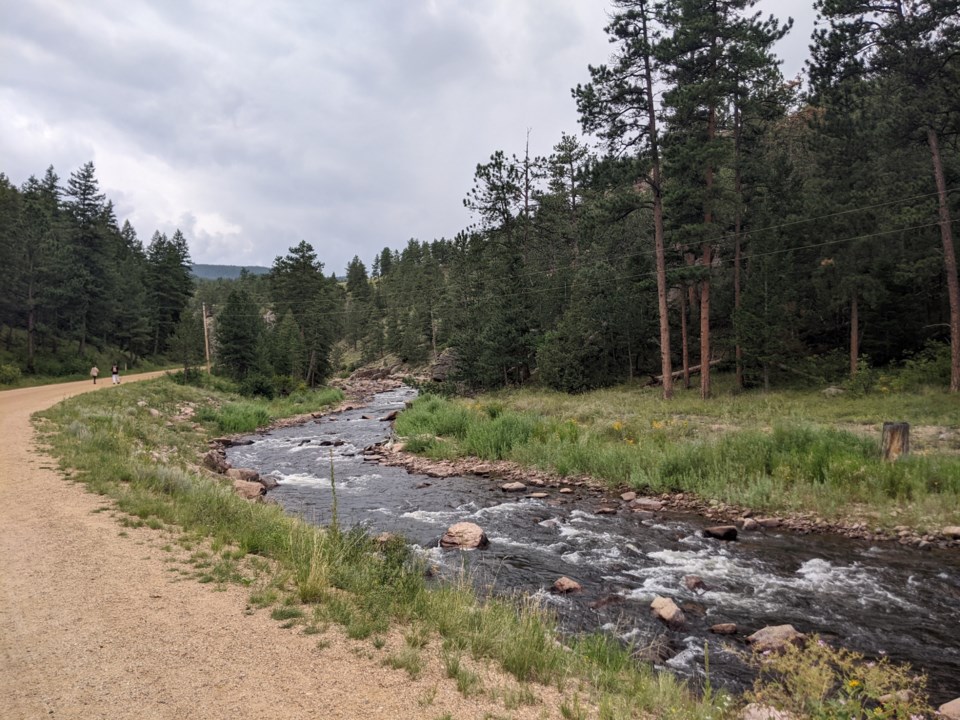Longmont City Council agreed with staff that prohibiting dogs would be in the best interest of the water quality and ecology of Button Rock Preserve.
The Button Rock Preserve Management Plan is the culmination of a two year study — which turned into four years thanks to COVID — to look at how best to manage Longmont’s only preserve and includes several recommendations. Longmont City Council approved the draft as written at Tuesday’s study session, and will formally adopt the plan at the next regular meeting.
Staff emphasized that the first priority of the 2,691-acre Button Rock Preserve was to protect its municipal water supply, followed by preserving the nature and wildlife within the area and allowing limited recreation if it does not affect the city’s first and second goals.
Button Rock Preserve opened to the public in 1965, seeing increased use in the 1990s that made the city formalize the trail system and slowly add other recreation opportunities like fishing. The last decade saw a huge jump in visitors, kicking off this management plan in 2019.
The plan went through three public meetings, four public surveys and three advisory boards, which all approved the plan though the Parks and Recreation Advisory Board was split on one of the key changes — prohibiting dogs from the preserve.
Project Manager Danielle Cassidy explained the dogs have immediate impacts on the nature preserve, displacing wildlife more than humans alone do while dog waste hurts soil, water quality and biodiversity. Since introducing an interim dog visitation policy that required all dogs be on leash and only allowing one dog per visitor, park rangers said that dog leash enforcement has been the top violation in recent years.
Cassidy noted that there are several other outdoor areas in Longmont and nearby that do allow dogs. Sandstone Ranch is the only other Longmont property prohibiting dogs altogether.
Cassidy also noted the high biodiversity of Button Rock, which is made up of 85% native plants and creatures, along with its rich cultural heritage and unique hydrology. The area is especially significant for bat activity with four species of rare bats found within the preserve, totalling eight species — there are 19 different bat species in total across Colorado.
Two members of the public spoke up in support of the plan, both noting that prohibiting dogs was a necessary part of preserving the area.
“Button Rock is our only preserve in Longmont,” resident Shari Malloy said. “It's a privilege to have any access. My father always said, ‘With privilege comes with responsibility.’ This preserve deserves our respect and responsible management. Prohibiting dogs is a sacrifice worth making to help safeguard this gem.”
City council was supportive of the plan, emphasizing that it's not a punishment for dog owners but instead a way to better preserve the area.
“What differentiates this from trails, greenways, state parks, federal parks is that this is a preserve,” Councilmember Tim Waters said. “Its primary purpose — not the only, but primary — is water storage and water quality is the highest priority.”
Beyond the dog prohibition, the plan outlines steps to manage the increasing use at the preserve. Current use has far exceeded what the area was initially designed for — the preserve saw annually about 3,200 visitors in 1988 and 18,000 in 1998 compared to nearly 60,000 in 2021, according to staff documents.
Other recommendations include minor modifications to the fishing permit program, rule and regulation updates, management zoning, increased signage and prescribed burning. The city may consider an entry fee or shuttle transportation at the preserve in the future.



